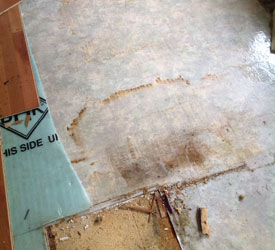How to Stop Water Damage in Your Bathroom
How to Stop Water Damage in Your Bathroom
Blog Article
Have you been trying to find critical info concerning How to Prevent Bathroom Water Damage?

The restroom is extremely susceptible for wet build-up and also prospective water damages because of the constant use of water in it. This post offers basic inspection methods to help discovering water damages hazards.
The constant use of water in the shower room makes it extremely susceptible for wet build-up and also potential water damages. By inspecting it on a regular basis, you can reduce water associated problems.
The following collection of inspections is simple to do and also ought to be done when in every 3 months in order to maintain your restroom healthy and to avoid prospective water problems brought on by the bathtub, the shower, pipeline joints and plumbing, sinks, cupboards, as well as the commode
Do not overlook carrying out these examinations and be comprehensive while executing them. Remember that these easy assessments can conserve you a great deal of cash by providing early indicators for water damages
Bathtub and Shower
The shower and also tub call for unique attention and upkeep. Check the tiles as well as replace if fractured. See to it that there is no missing cement in between the tiles. Check and also change cracked caulking at joints where the walls meet the floor or the tub. Obstructed drains pipes and also pipes problems will avoid the tub from drying out and also might show significant troubles beneath the bathtub. Speak with a professional instantly to avoid architectural damages. Focus on stainings or soft locations around the tub wall surfaces as they might suggest an interior leak.
Plumbing
Signs for water damage are difficult to discover considering that a lot of pipelines are set up inside the walls.
Pay special attention to flooring and walls dampness and also spots as they might suggest an undetectable plumbing issue. Check moisture levels in adjacent areas also.
Sinks as well as Cabinets
Sinks and cabinets are exposed to dampness and also humidity daily and are frequently ignored. Inspect routinely under the sink and also on the counter top above it. Fix any kind of drip in the catch as it may suggest drainpipe issues. Take a look around the sink, slow draining pipes might suggest a blocked drainpipe. Change sink seals if they are broken or loose.
The Commode
The toilet is an at risk water junction. Check the water lines and also search for leakages around the toilet seat, in the tube, as well as under the water storage tank. If you detect any kind of indications of dampness on the flooring around the toilet, look for leaks in the toilet edge as well as tank seals.
Realize that hanging bathroom dish antiperspirants increases the opportunities for blockages.
Water Damage Signs In The Bathroom To Avoid Cleanup
Musty smell
This is one of the easiest signs to catch because musty smells are so odorous. The damp, earthy, moldy smell should be a big red flag. The smell will develop when moisture gets trapped in surfaces, and begins to facilitate mold growth. Leaking pipes under cabinets, inside walls, and behind shower fixtures will cause moisture to stay trapped and not dry, which will lead to mold growth and spread. As soon as you notice any musty smells in your bathroom, have it checked for hidden water damage and cleanup signs.
Visible mold
If the smell isn’t there to give it away, sometimes you will actually see mold growth. Finding mold in your bathroom is a serious problem, because mold is very harmful to your health. By the time mold growth is visible, it also means that water damage has already occurred and been present for some time. The only way the mold problem can be resolved is to find the source of the moisture and get it stopped. To safely and adequately remove mold, you need to have professionals handle the remediation. Do not waste any time in getting mold problems addressed, fixed, and sanitized so that you can protect you and your family from the many respiratory symptoms caused by mold exposure.
Damaged floors
Bathroom floors should be able to withstand some exposure to water while still remaining in good condition. However, when excess exposure or water leaks occur, they will begin to damage even the most water-resistant flooring. If you notice any cracking, bubbling, staining, or warping on your bathroom floors, there is probably a water leak somewhere causing the distortion. If you notice areas of the floor have become softer, or even have a spongy feeling, there is probably damage to the subfloor. Subflooring is typically made up of plywood. When plywood is exposed to water or moisture, it will absorb it. Once it has become saturated, the weight of the excess water will cause the wood to swell and soften. Check the floors in your bathroom frequently to catch any of these sings before they lead to damaged subflooring.
Changes on walls
When water leaks behind walls, it will cause changes in the drywall. Peeling plaster, blistering paint, and soggy wallpaper are all good indicators that excess water is building up behind the wall. Water leaking behind drywall will cause it to swell and be soft to the tough. If you start to notice gaps along the trim of your walls, or where tile meets the wall, it could also be a strong indicator that there is a leak behind the wall. Any changes, distortion, or damage on the walls should be evaluated as soon as you notice it to prevent further water damage and cleanup.

As a person who reads about How to Repair and Prevent Bathroom Water Damage, I figured sharing that piece of content was mandatory. Those who appreciated our blog entry if you please make sure you remember to share it. Many thanks for your time. Visit again soon.
Schedule Now! Report this page